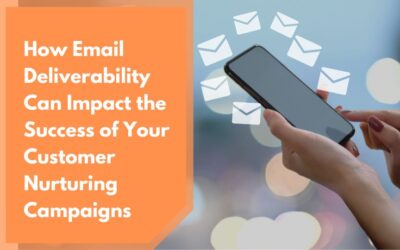Effective email marketing may seem antiquated but it is a relevant way for businesses to engage with consumers and open a direct channel of communication with them. An integrated marketing campaign can use email marketing to nurture and convert contacts into leads. Email should be an essential part of every organizations marketing strategy, as it is a relatively inexpensive way to position your business as the best by reaching users with dynamic and valuable content.
Are your subscribers happy and engaged with your email content? Here are some best practices to help marketers manage an email list well to win more business.
Email Marketing Engagement
Sending emails en masse just does not work in email marketing and ad hoc communications tend to annoy recipients enough to just ignore the messages or even block the sender. Limit the number of messages going out from your organization to the customers per month from various departments. Excessive emails can frustrate recipients, so maximize engagement by focusing on the most important messages for that particular customer. When it comes to email marketing, the metrics used to measure engagement are most often ‘confirmed open rate per send,’ ‘click through rate per send,’ or ‘conversion rate per send.’ Be specific about what you want to achieve and then engage with your subscribers. Ideally you would want your email marketing campaigns to garner interest through subscription, capture attention by opening emails and take action by clicking but remember that conversion can happen through any of these stages. If the most important engagement metric is high open rates, then you need to pay attention to the copywriting but if higher click-through rate is of more value to your business, then the quality of your email content has to be persuasive and irresistible enough to draw subscribers to click on your links.
Personalized Email Messaging
Marketers must try to understand the needs of the customers and personalize messages accordingly, in addition to including content that is of interest or value to them. Personalized first name salutations, will help create relationships and increase click-through rates. Most email service providers allow you to upload the contact person’s name, company name and other relevant information you have on them. This little effort is likely to endear you to your subscribers. Segment your email list and target your messaging clearly on the contact’s lifecycle stage, whether it is a current client or someone who is new to your list and just exploring your product/service. This increases the likelihood of the reader clicking on your call to action.
Similarly the ‘From’ field appears first in the majority of email clients, and likely the first thing customers see, so make sure they know who the email is from. If your recipient does not recognize the brand, company name or individual name here, then they won’t open the email and in fact might even mark it up as spam. So consider whether your subscriber is more likely to recognize your brand or someone specific from the company. A simple A/B testing might reveal the proper approach for you. But generally using a real person’s name for your “friendly from” name usually produces a higher open rate than using your generic marketing or communications department name.
Customer-centric Email Messaging
Instead of wearing the marketers hat, when you’re sending messages think about them from the customer’s point of view. The attention span of an individual is about 8 seconds so tailor your email to grab the customer’s attention by keeping your message short and focused on a clear call to action. Since 51% of all emails are now opened on a mobile device, it is important for emails to render properly on mobile devices. By sending responsive emails that adapt to the screen size of the device a reader is using, you improve your chances of that email being clicked on.
If you can’t provide value to the email recipient, your attempt at effectively engaging with them will fail. You can also improve the trust factor with your customers by sending them something of value in every mail, without any pitch. Like instead of sending a general message promoting new products and services, you can help the recipient understand how your services can add value to them. Each email should have a clear, concise Call to Action (CTA) that focuses the recipients towards taking clear actionable steps, whether it is driving them to a new product page, getting them to agree to a trial, urging them to take a survey, inviting them to an event or promoting any special offer you may be including. Some of your customers won’t have the time to read business blogs but they get to quickly browse the email newsletters that you send them. They might also be keen to share content across social platforms, so seamlessly integrate social sharing buttons for all your content in your email delivery system. You may even include social media links to your business and encourage them to follow you.
Your emails can only be an effective marketing tool if it reaches a potential customer. So it is important to also measure customer engagement and keep an email list updated with people who are actually interested in your product or service. This actually helps your emails reach the right prospects inbox and improves response rate.
Any email marketer knows that effectively reaching the customer’s inbox is the key to success and in order to truly understand email engagement you must also have knowledge of the weapons in your arsenal that can be of use to you as an email marketer.

![[Blog Abstract] 8 Proven Ways to Make Cold Emails Work for You](https://www.directivegroup.com/wp-content/uploads/2020/01/make-cold-email-work-400x250.jpg)



